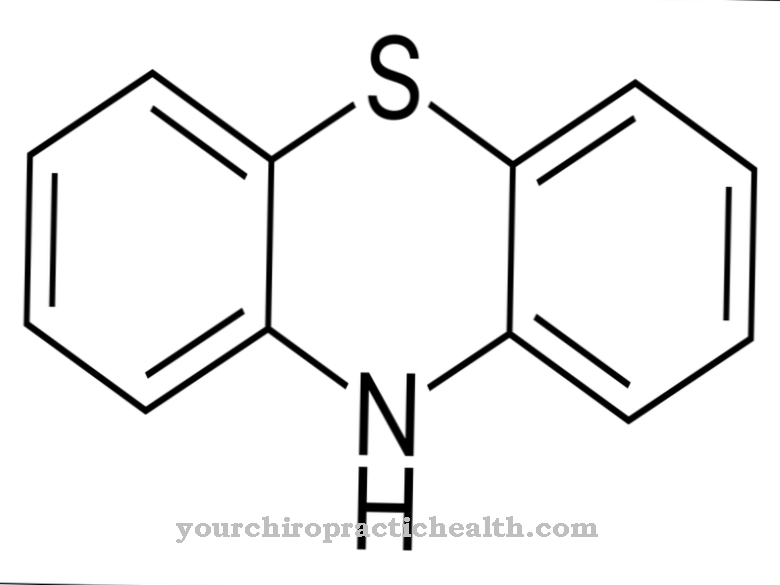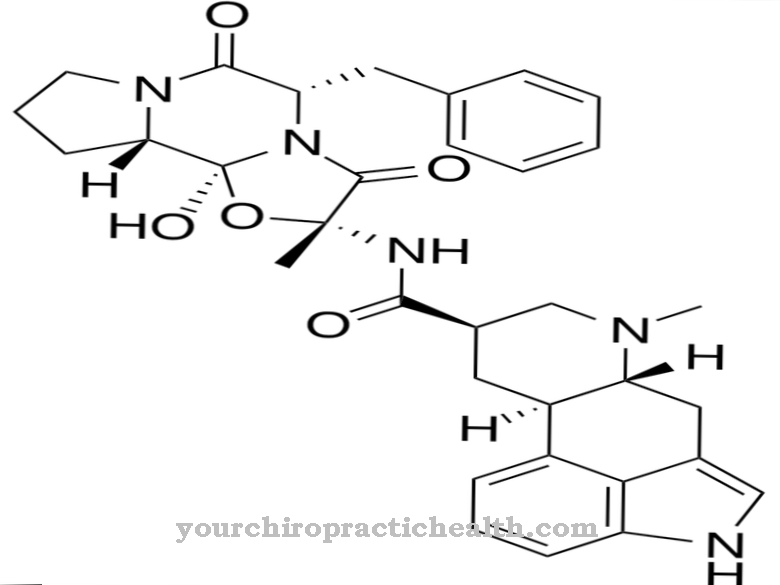Chlorphenamine is an antihistamine that is used to treat allergic diseases. It inhibits the action of the messenger substance histamine and thus counteracts allergic symptoms such as itching, reddening and skin reactions. Chlorphenamine also has an antidepressant and sedating effect. It is on the market under various trade names as a monopreparation and also as a substance in combination preparations. Possible side effects include tiredness, nervousness, dry mouth and sleep disorders.
What is chlorphenamine?
Chlorphenamine belongs to the chemical group of alkylamines. It is a first generation antihistamine.The drug is used in human and veterinary medicine to treat allergic reactions.
The drug is available under the trade names Trimeton® and Balkis Dr. Henk® cold capsules known. It is also contained in various combination products such as Solmucalm®, Rhinopront®, Pecto-Baby®, Migraine-Kranit® and Benical®. Chlorophenamine is present in medical devices as what is known as chlorophenamine maleate. Chlorphenamine maleate is a white, crystal-like powder and is soluble in water.
Pharmacological effect
Chlorphenamine is a histamine receptor antagonist. These active ingredients reduce the effect of the body's own messenger substance histamine or even cancel it out completely. Histamine is a biogenic amine and an important mediator in the human body. It plays a role in gastric acid production and in the central nervous system. It is also responsible for allergic reactions.
Upon contact with an allergen, the histamine is released in granulocytes and mast cells and binds to the receptor. This can lead to redness, edema, and itching.
Chlorphenamine works on the so-called H1 receptor. The H1 receptors are on endothelial cells. Once activated, nitric oxide is released due to increased calcium levels. This leads to a relaxation of the vascular muscles. This fact leads to what is known as vasodilation. The blood vessels expand.
This process can lead to allergy symptoms such as itching, reddening of the skin or anaphylactic shock due to the release of histamine. The latter is life threatening.
In addition to its effect on the messenger substance histamine, chlorphenamine has other properties. It has an antidepressant effect as it reduces the reuptake of norepinephrine and serotonin at the nerve endings. So far, however, there have been no studies on humans for this possible area of application. In addition, chlorphenamine has a tiring (sedative) effect.
Medical application & use
Because of its inhibitory effect on the histamine receptor, chlorphenamine is used to treat allergic diseases. Indication areas are therefore diseases of the respiratory tract such as hay fever, runny nose, allergic rhinitis, chronic nostrils and sinusitis. It can also be used to treat colds and flu-like effects. The drug can also be used for symptomatic therapy in allergic reactions such as nettle rash or conjunctivitis.
Since the drug has an antidepressant effect, it could be used to treat depressive moods. However, this mode of action has not yet been proven in humans.
Due to the relaxing and calming effect of the medical device, chlorphenamine is often misused as a sedative. This is particularly dangerous in combination with other dampening substances such as alcohol. Taking it at the same time can exacerbate the undesirable effects of the drug. In addition to alcohol, an interaction between chlorphenamine maleate and neuroleptics, benzodiazepines or antidepressants is possible.
Chlorphenamine must not be used in medicine if the patient suffers from hypersensitivity, urination disorders or a greatly enlarged prostate. Furthermore, the substance should not be used to treat acute asthma attacks. In addition, the drug must not be used during pregnancy or breastfeeding. In addition, young children should not be treated with chlorphenamine.
Risks & side effects
Chlorphenamine has different side effects. The undesirable effects include dry mouth, throat and nose, sleep disorders, fatigue, nervousness, drowsiness and poor eyesight. The drug can also cause glaucoma, known as glaucoma.
Since chlorphenamine has a tiring effect, you should not use machines or drive while taking it.
An overdose of the active ingredient can lead to a so-called anticholinergic syndrome. This is characterized by fever, cramps, dry mouth, reddening of the skin, and hallucinations.
Muscle tension, low blood pressure, circulatory collapse and respiratory paralysis are other symptoms that can occur if the drug is overdosed. A fatal outcome cannot be ruled out if used incorrectly.
An American cohort study from 2015 also demonstrated a positive correlation between long-term use of chlorphenamine maleate and an increased risk of dementia such as Alzheimer's.



























